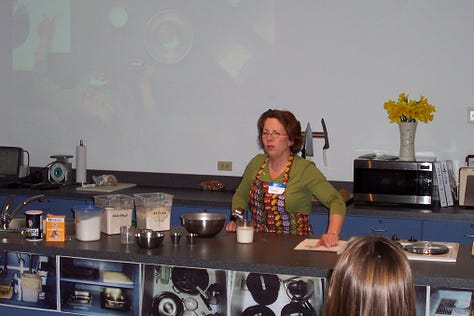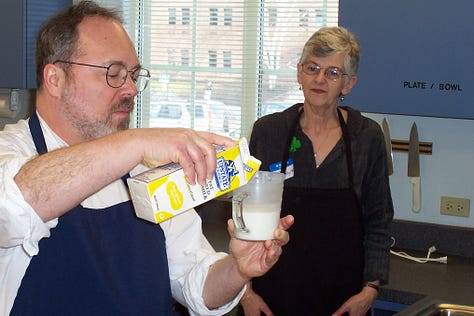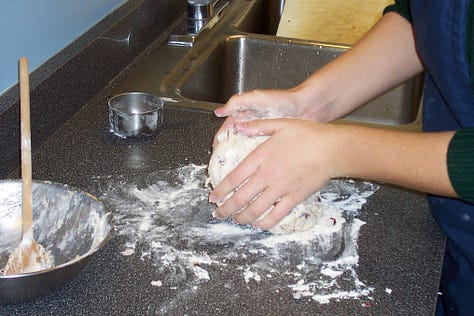Irish Soda Bread
A "fancy" version with currants and caraway seed is easy to mix up for the holiday

All eyes turn this weekend toward the Emerald Isle, toward a blaze first ignited on the Hill of Slane. St. Patrick, the patron saint of Ireland, lit his Paschal Fire there not long after he arrived in 432 AD and challenged High King Laoghaire in his stronghold at Tara. Persuasive, Patrick is generally credited with converting the entire island, and one of his early converts was the Druid king’s own daughter.
Born Maewyn Succat in Scotland in 387 AD, Patrick was taken captive at 16 by Irish marauders and enslaved in Ireland for 6 years as a shepherd. A dream encouraged him to walk 200 miles to the sea and escape to Britain then on to a monastery in France where he studied the newly evolving Christianity that promised a gentler life than the warring indigenous tribes knew. Another dream directed him to go back to Ireland and save souls, which he did through his renowned eloquence and familiarity with Irish customs.
But I think something else was at play. I think he missed the food and the Irish people. Ireland is a vibrant nation today, with modern cities and a thriving tech industry, but when you get off into the country, life goes on at pretty much the same rhythm that has been beating for millennia. There are the cows and rich milk from the greenest grass on earth. There are oysters, mussels, lobsters, and delicate cockles for gathering on all the coasts; rivers filled with salmon and trout. There are sheep, stopping cars on the road and in no hurry to move along. Bees busy making honey, chickens laying fertile eggs—and hospitable people more eager to spend time talking and laughing than making sure their stone fences are pointed.
Our celebrations in this country are much more raucous than what transpires on the Old Sod, where folks go to church, there are some parades, and it is a school holiday. Here menus feature corned beef and cabbage, an entirely North American invention, and green beer. Foods that are more commonly enjoyed in Ireland are smoked salmon, Galway oysters, potatoes in any and every fashion, and some rich farmstead cheeses. One ubiquitous component to the Irish table, though, is soda bread, a simple loaf made with buttermilk or sour milk and baking soda.
Fancy versions of soda bread include raisins or currants and sometimes caraway seeds, but the brown bread found on most tables is a simpler sort, wheaty and dense, and the perfect foil for some rich cheese Irish cheese.









Many years ago we held a Slow Food Central PA Soda Bread workshop in the Foods Lab at Penn State where I taught. Joann Dornich provided her recipe and expertise and I demonstrated the process. We shared some stories, tea, and cheese and a dozen people went home with their own loaf. Make some soda bread and make people happy this St. Patrick’s Day. It’s a fine fine holiday.



Joann Dornich’s Irish Soda Bread
This recipe is from her mother’s mother, Grandma Bridget, and is a flavorful, rich loaf made more enticing with currants and caraway seeds.
Makes 1 round loaf
3 cups sifted flour (use half whole wheat and half white for a heartier loaf)
3 tablespoons sugar
1 tablespoon baking powder
½ teaspoon baking soda
½ teaspoon salt
1 cup currants or raisins
1 1/3 cup buttermilk
2 teaspoons caraway seeds
Glaze:
2 tablespoons sugar
2 tablespoons hot water
Preheat oven to 375°. Mix the flour, three tablespoons of sugar, baking powder, baking soda, and salt in a medium-sized bowl with a whisk. Mix in currants and caraway seeds. Add buttermilk and mix until well blended (dough will be sticky.)
Turn out onto a lightly floured board and knead about 10 times. Shape into an 8-inch round loaf. Place on a greased (or sprayed or parchment-lined) baking sheet. Cut a cross (+) into the top of the loaf with a sharp knife. (Note: Joann cuts this really deeply, about a third of the way into the dough.)
Bake at 375° for 45 minutes. Dissolve the sugar for the glaze in the hot water in a cup and brush generously over the hot loaf. Bake ten minutes longer until richly golden brown.
Tip
Instead of using a sugar-water glaze on the top of the bread at the end, you can soak the currants or raisins in about 1/3 cup of hot water while you prepare the dry ingredients. When ready to add the fruit to the dough, drain and reserve the liquid and use for the final glaze to impart an even deeper, richer color to the finished loaf.
Portions of an early version of this article first appeared in the Centre Daily Times in 2004.



